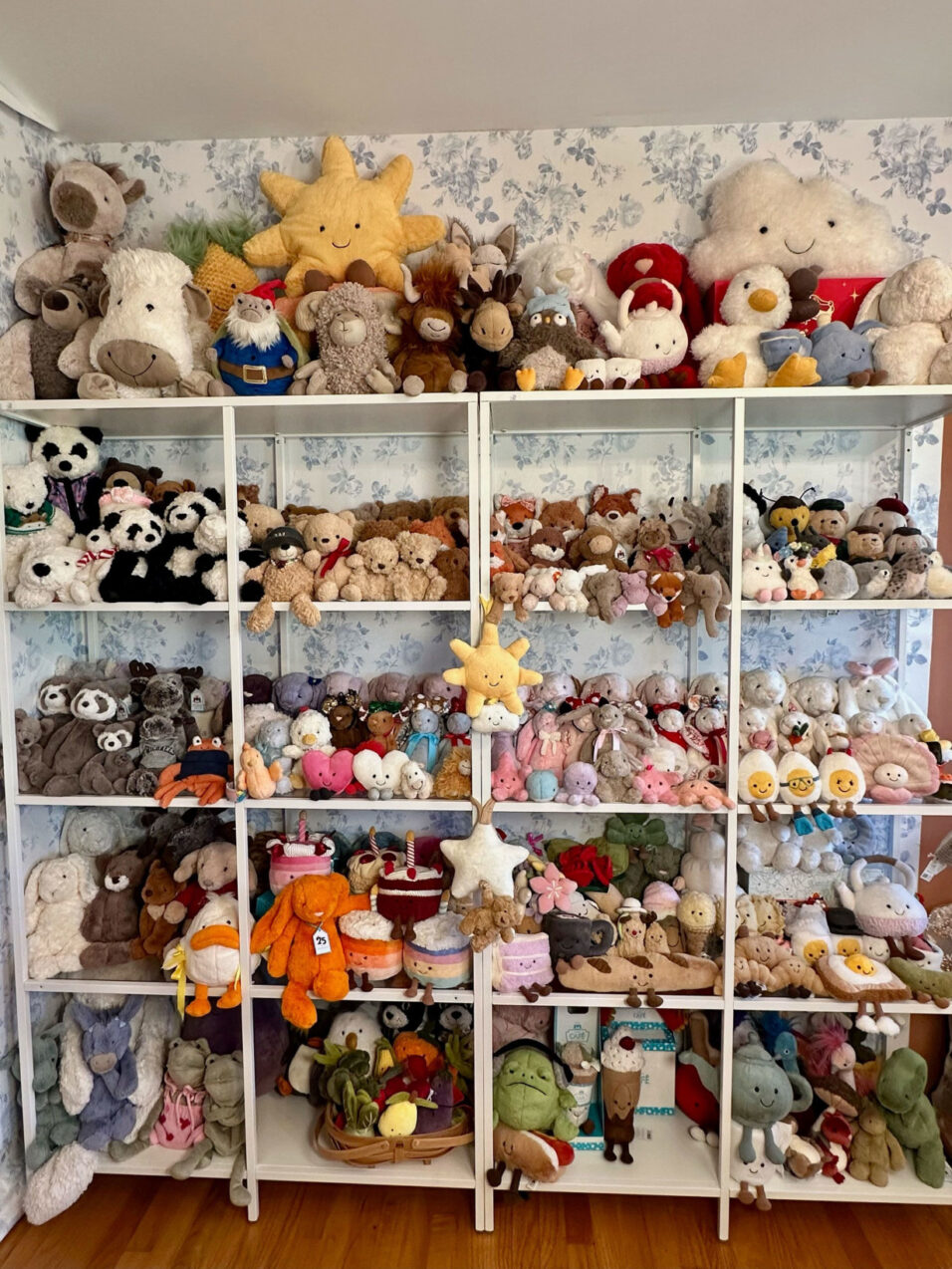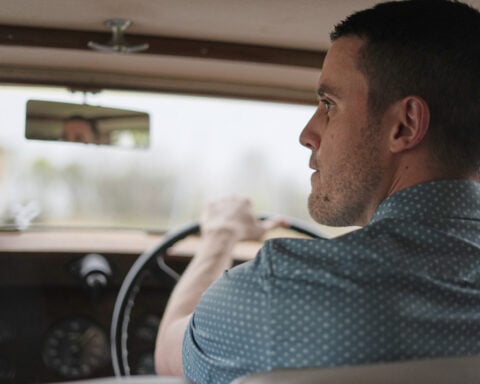(CNN) — When Maria Fowler was pregnant with her first child, one of her first purchases for her daughter was a classic: A stuffed animal.
She settled on a Sweet Heart Hugs Build-A-Bear, a soft, pink, blue and purple tie-dyed plushie with globe-like eyes and hearts on its feet.
Once her daughter was born, Fowler watched as she poured love and attention into the toy, along with her other stuffed animals. Fowler was touched; her daughter reminded her of her own childhood.
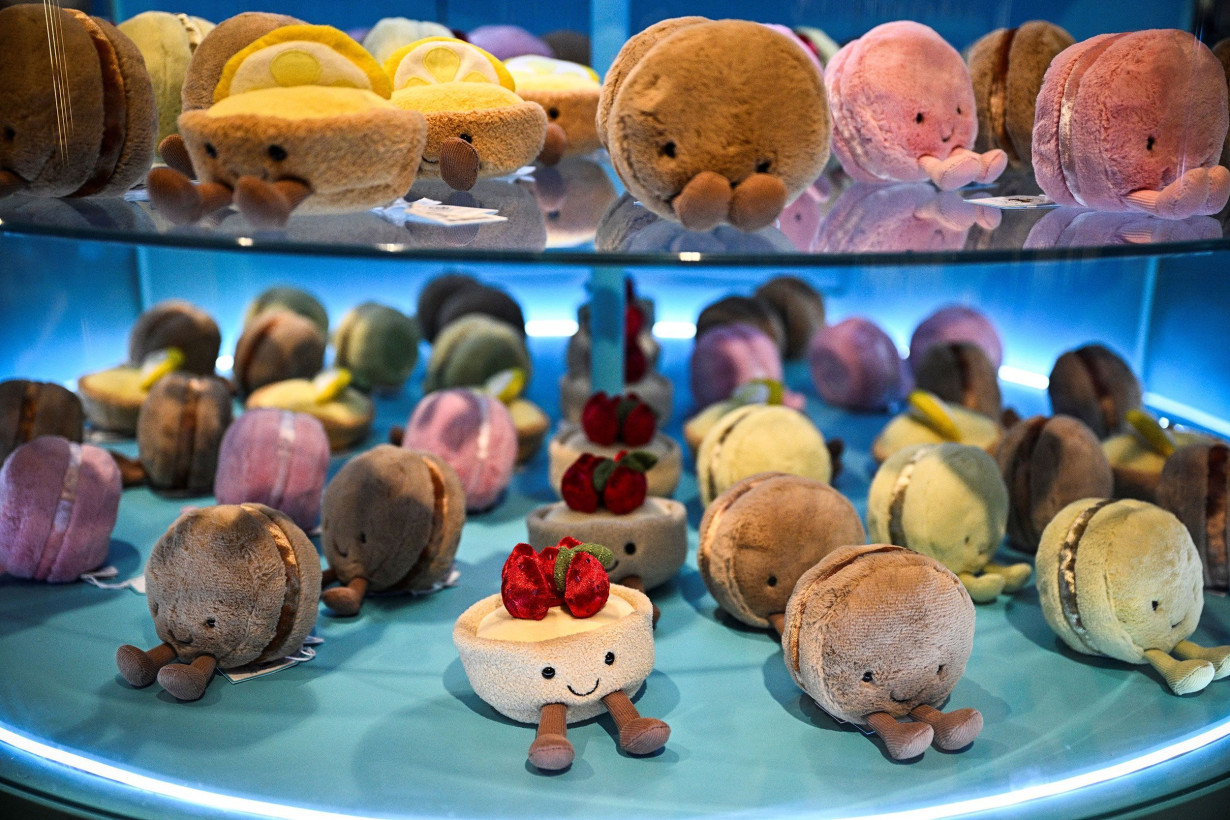
So she decided to do something for herself. Last January, Fowler purchased her own Build-A-Bear, too — something her family couldn’t afford when she was growing up. She decided on the Christmas Sugar Cookie bear, a cream colored bear with red and green sprinkles all over.
“I was like, I’m an adult with adult money now,” Fowler, 34, said. “So I’m going to buy myself a Build-A-Bear, and heal that part of myself.”
Now, Fowler has around 500 stuffed toys that are just hers, not her kids’. While she started with a Build-A-Bear, Fowler said she has about 300 Jellycats, the ultra-soft plushies taking over TikTok, while the rest are brands like Squishmallows, animal-shaped pillows with wide bodies and small faces ideal for hugging.
While 500 may seem like a lot, Fowler isn’t alone. Adults across the country have flocked to purchase plushies, so much so that in 2024 they made up more than 20% of all plush toy sales, according to market research firm Circana.
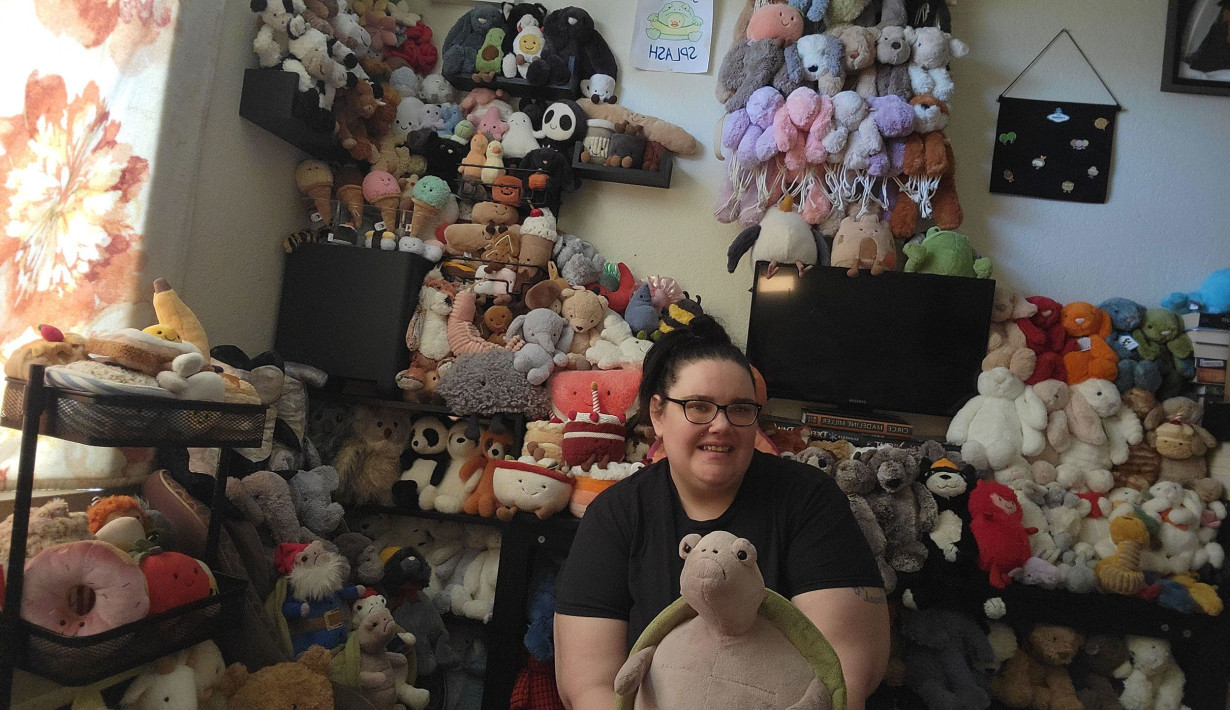
While not everyone’s collection is in the hundreds, having one, two or even 10 stuffed toys as an adult has become common. Jellycats, for example, have taken over cities like New York and Paris with a restaurant experience where customers can order “food” (in stuffed Jellycat form), while plushie animal charms have appeared dangling from purses on New York Fashion Week runways. And the toys have probably even found their way onto a friend’s mantel or car dashboard — all because they’re so tooth-achingly adorable.
Transitioning into adulthood used to mean putting away “childish things.” But the ubiquity of these stuffed toys among all of us tax-paying, coffee-drinking, PG-13 watching, multiple-credit-card-carrying adults reveals how that long-held notion might be shifting.
Plushies can be a source of comfort
Adults collecting stuffed toys isn’t new — see the mania of the 1990s around Furbies and Beanie Babies, taken so seriously that one couple sat on the floor of a courtroom and divided their Beanie Babies collection one by one during divorce proceedings.
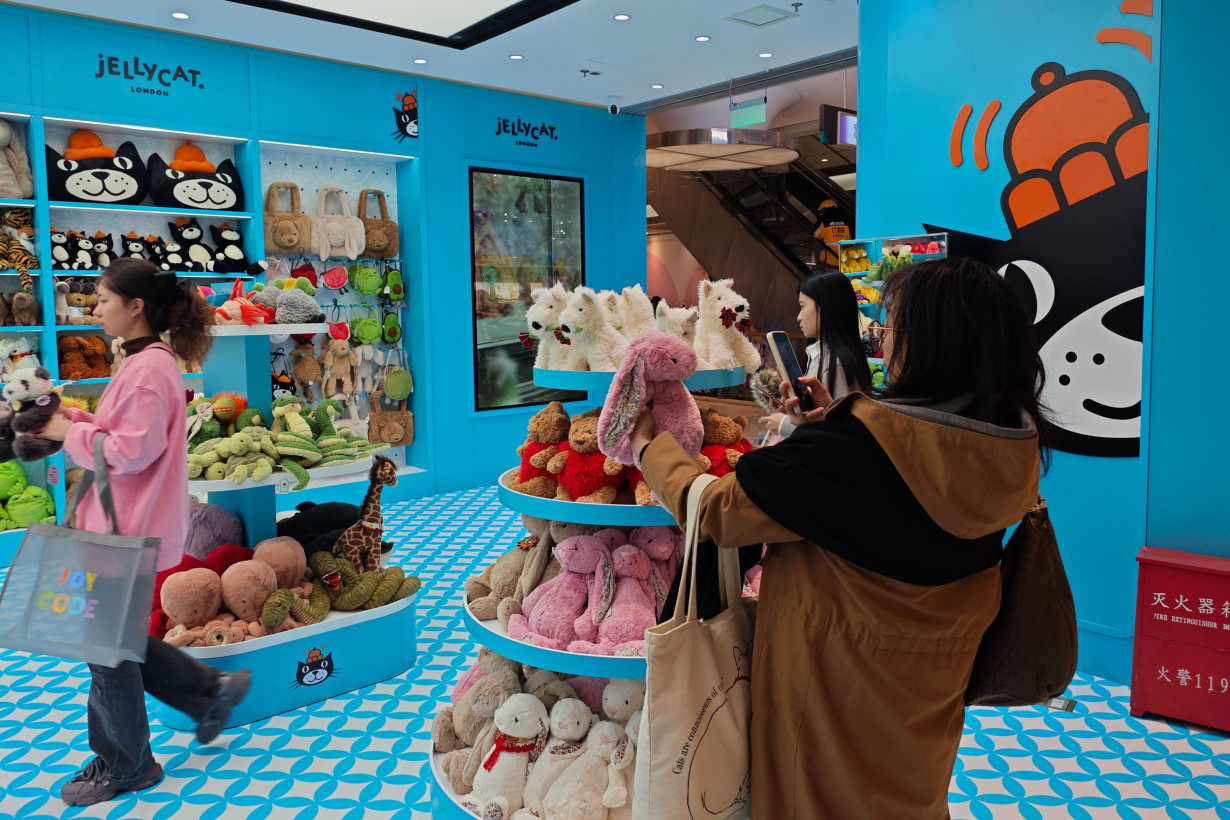
Feelings of perceived instability can propel adult interest in children’s toys, said Jess Rauchberg, who studies digital culture at Seton Hall University in New Jersey. While the 1990s were a time of economic prosperity, uncertainty lurked amid the approaching Y2K era and new millennium. Today, economic and political uncertainty have become the driving force.
“We are searching for the nostalgia of what’s comfortable to us,” she said. “These toys and these plushies symbolize something that we want to hold onto.”
That search for comfort and healing of an inner child isn’t just showing up in plush toys. On social media, posts about rediscovering childhood hobbies and “realizing that actually 12 year old me was kinda onto something” have dominated discourses for months, pointing to an overarching cultural pushback against the perceived bleak demands of adulthood.
“I think it speaks to these larger discourses or these larger conversations about agency,” Rauchberg said. “Do you have the power to do things for yourself, and is that seen as selfish, or against these ideas of what it means to be a woman? Or are you just still trying to be a girl?”
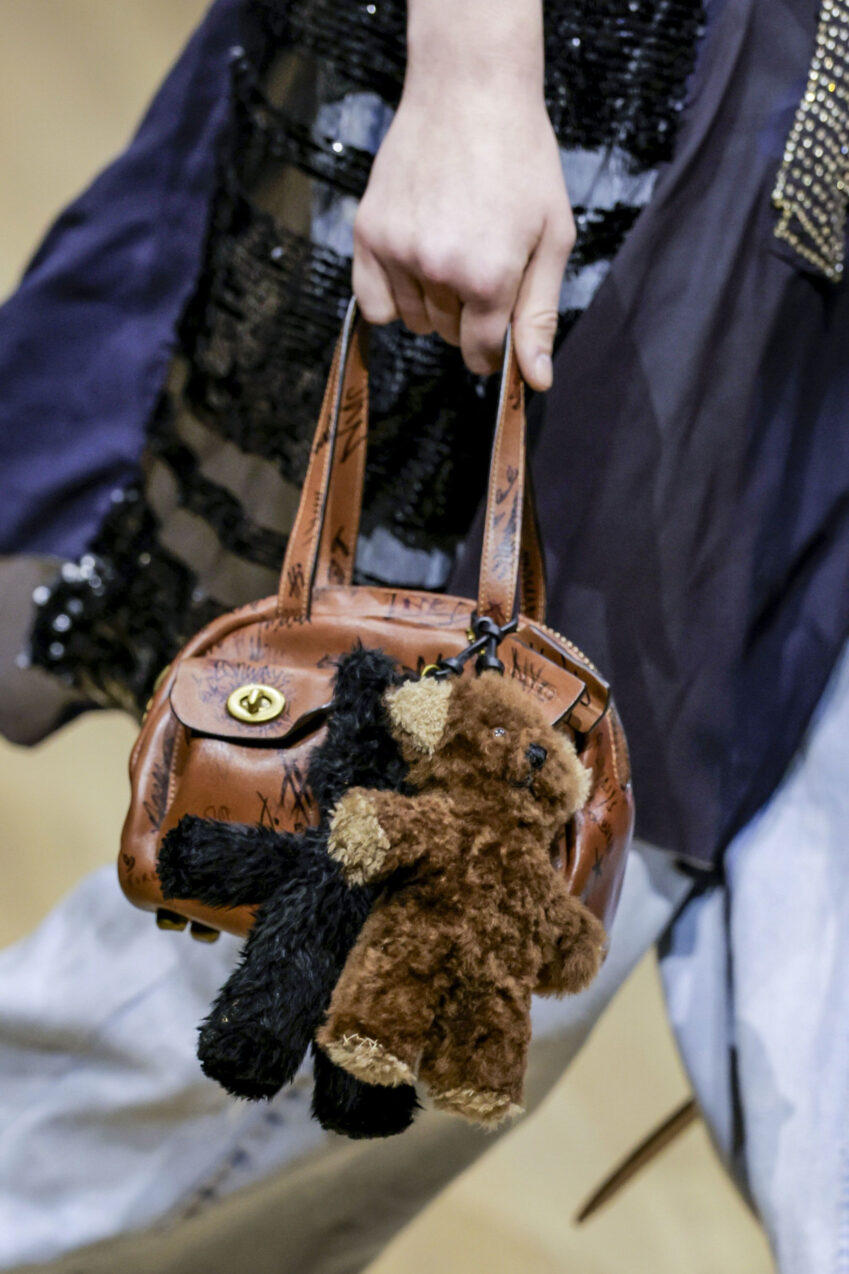
Plushies might also be a pushback against adulthood
In the toy market as a whole, adult female customers have made up about two-thirds of the growth seen in 2024, Circana found. For plush toys specifically, that growth primarily began in the pandemic, said Juli Lennett, US toys industry adviser at Circana.
“It struck a chord with young adults and adults as a means to entertain, collect and provide comfort during the pandemic,” Lennett said. While plush sales did dip toward the end of 2024, “that behavior has sustained over the past five years.”
But the delight of these huggable toys coincides with other notable trends, beyond just a desire for comfort or to reconnect with an inner child. Online quips of “I’m just a girl” — a phrase bemoaned as a way to avoid responsibilities or everyday annoyances — “girl dinner,” which has made its way into real restaurants, and “girl math,” have evolved past online humor and ingrained themselves into our world. See also: the comeback of the girly aesthetic in fashion, like bows, ribbons and frills. And, of course, plush toys.
In other words? It seems like no one wants to grow up.
“This is more than just ‘I am really scared about what’s going to happen in the world, and I need a squishy toy,’” Rauchberg said. “I think it does signal an arrested development.”
Part of this shift, Rauchberg said, might be a pendulum swing from the “girlboss” culture that dominated the 2010s, which broadcasted an idea of a successful, career-driven woman balancing life’s demands with ease. That can-do spirit has been driven out by today’s childlike version of womanhood, where one can write off buying a $300 Jellycat stuffed toy as long as you forgo takeout for a week. Girl math!
“There is a more earnest or openness to wanting to be young,” Rauchberg said. “And to extending girlhood, extending your younger self.”
Renegotiating what adulthood means
Our desire to extend childhood has been explored in many wide-ranging aspects of our culture. Think of the bro comedy movies of the aughts, like “Knocked Up” (2007) or “Failure to Launch” (2006), which often depict a male protagonist resistant to ambition or otherwise stuck in a prepubescent stage of life.
More recent shows like “Broad City” — two 20-something women spend their days languishing, unsure of how to navigate early adulthood — portray a similar conundrum. Even classic stories like “The Little Prince” or “Adventures of Huckleberry Finn” juxtapose the sweet innocence of childhood with the barren mundanity of adulthood.
The demand for plush toys could be seen as part of this lineage, an attempt to resist the perceived trap of adulthood. Or perhaps there’s a more hopeful aim, that these toys may signal one way some consumers are renegotiating what exactly it means to be an adult.
Iris Lee is a 31-year-old former consultant who also runs a social media account dedicated to stuffed animals. Lee has “thousands” of plushies, she said, many of which are gifts she received when she was a child. Still, she said more than 1,000 of them are toys she bought for herself, as an adult.
The stuffed animals give Lee a sense of comfort and security, she said. At one point, she started buying a lot of Jellycats because she was having a hard time at work, she recalled. There was a store that sold the toy brand across from her office, so whenever she needed a break she would walk over and peruse the toys, just like she did as a kid.
“It takes my mind off,” Lee said. “In some sense, it’s an escape.”
Lee knows that there are those who might be confused as to why she carries around a stuffed toy, or still sleeps with a stuffed animal. But they’re cute, she said, and she likes them. Beyond that, who cares?
“It is okay to also act — not childish — but be with things that make (you) happy,” Lee said. “No matter if they’re childish or not.”
Doing whatever you please — what’s more adult than that?
The-CNN-Wire
™ & © 2025 Cable News Network, Inc., a Warner Bros. Discovery Company. All rights reserved.

 Trump has begun another trade war. Here's a timeline of how we got here
Trump has begun another trade war. Here's a timeline of how we got here
 Canada's leader laments lost friendship with US in town that sheltered stranded Americans after 9/11
Canada's leader laments lost friendship with US in town that sheltered stranded Americans after 9/11
 Chinese EV giant BYD's fourth-quarter profit leaps 73%
Chinese EV giant BYD's fourth-quarter profit leaps 73%
 You're an American in another land? Prepare to talk about the why and how of Trump 2.0
You're an American in another land? Prepare to talk about the why and how of Trump 2.0
 Chalk talk: Star power, top teams and No. 5 seeds headline the women's March Madness Sweet 16
Chalk talk: Star power, top teams and No. 5 seeds headline the women's March Madness Sweet 16
 Purdue returns to Sweet 16 with 76-62 win over McNeese in March Madness
Purdue returns to Sweet 16 with 76-62 win over McNeese in March Madness
